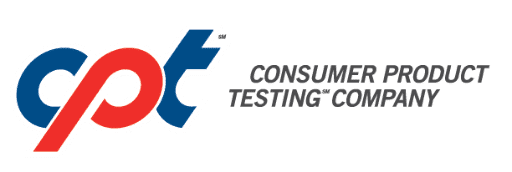Personal care and beauty products are manufactured using a selection of approximately 10,500 unique chemical ingredients, so it’s imperative that products are properly tested before reaching the marketplace.
As stated on the EWG’s Cosmetics Database, the average person uses nine products daily and in some cases, women were applying 15 or more products almost every day. Consumers are beginning to question what they’re putting on their body, so in order to create superior products, cosmetic safety testing is critical.
Trends in the Beauty and Cosmetics Industry
Over the past two decades, the global beauty market has grown by an average of 4.5 percent each year. Due to the growth of online sales, this trend is continually rising. In 2010 alone, more than $11 billion USD of online cosmetics sales were recorded.
Although all sectors of the beauty industry continue to rise, there is a significant upward trend in organic and “natural” cosmetics. Previously, these products were fairly niche, but they are now quickly moving into the mainstream market based on new trends, including cosmetic safety.
Focusing on total sales across product categories, skin care jumped from 16.4 percent of the market in 1998 to 23 percent in 2010. During this period, total sales more than doubled, reaching $382.30 billion USD.
Some of the most recent trends include:
- Biotech
- Transparency (labeling and safety standards)
- Organic products
- Sustainability
- Technology and innovation
The Role of Cosmetic Safety in the Marketplace
Just as food and drugs are tested within the United States under the FDA, consumers are raising concerns regarding beauty products, especially regarding those applied directly to the skin. In the past, cosmetics standards were fairly loose, but this is beginning to change.
Consumers are demanding greater transparency, which begins with proper testing and labeling. In fact, when it comes to the cosmetics and personal care sector, consumers are:
- Concerned about the level of chemicals within the products they use.
- Focused on ethical consumerism.
- Looking for some level of certification.
- Paying close attention to formulations.
In order to meet the needs of consumers while strengthening safety, internal standards were recently implemented to ensure that a product is not contaminated, sensitizing or irritating. Guidelines were submitted by the Personal Care Products Council (formerly known as the Cosmetic, Toiletry and Fragrance Association) in 1991, then revised and upgraded in 2007.
In 2015, the Personal Care Products Safety Act was introduced. This is a bill that aims to enhance advancements in the FDA’s ability to protect the health of American citizens. The following areas now apply to cosmetics manufacturers:
- The FDA will assess the safety of a minimum of five cosmetics ingredients annually.
- Companies are required to register all relevant products, ingredients and facilities.
- Companies are required to comply with good manufacturing practices.
- Full ingredient disclosure is mandatory, including for cosmetics sold online.
- Companies must give the FDA mandatory recall authority when products have been deemed unsafe.
In terms of safety testing, two key areas are of concern:
- The safety of raw materials used.
- The safety of the finished product.
In order to create a safety-testing program, the most important factors are the dosage and the route of administration — where is the product applied on the body, and on average, how long is it on the skin?
The main issues surrounding raw materials, especially among suppliers, are the trends discussed above. Today, many consumers and manufacturers are looking solely for cruelty-free, environmentally friendly ingredients. In the past, animal testing has been a reliable method when evaluating the toxicity of materials, but now it is a major concern.
To address this issue and move away from animal testing long-term, toxicology risk assessment has begun to fill the gap. This will more accurately predict actual risk in relation to cosmetic safety. Once toxicologists evaluate the chemicals present, they will determine whether or not the raw material presents toxic potential, requiring further testing. It’s important to review:
- Whether that ingredient is photoallergic or phototoxic.
- The level of dermal irritancy, which is generally conducted by the supplier, testing at their maximum intended use dilution, but an in-vitro method of testing is much more reliable.
- Whether materials include possible mutagenic compounds.
- The material in relation to the possible growth of microorganisms, which is certainly the case with natural ingredients.
When it comes to final product testing, this process is significantly more complex. A finished product contains numerous ingredients that need to be addressed individually while looking at how they may interact.
Some of the questions manufacturers need to ask themselves are:
- Where is the product be applied on the body, and how long is it in contact with the skin? When applied to a sensitive area of the body, for instance, in-use safety testing is imperative.
- Does the product contain any known irritants?
- Will the product be used as part of a regular regime?
- Does the product apply to a specific segment of the markets, such as babies?
As discussed above, in-vitro testing is available. This will not only help determine irritation potential, especially in terms of ocular irritation risk but also preservative efficacy — will the preservatives be adequate in terms of the product’s lifespan?
Although cosmetic safety was overlooked in the past, this is rapidly changing. New practices are evolving and consumers are becoming more educated. As a product manufacturer, thorough testing should be a top priority.
Always take a proactive approach. Protect your reputation, long-term success and, most importantly, consumers.

